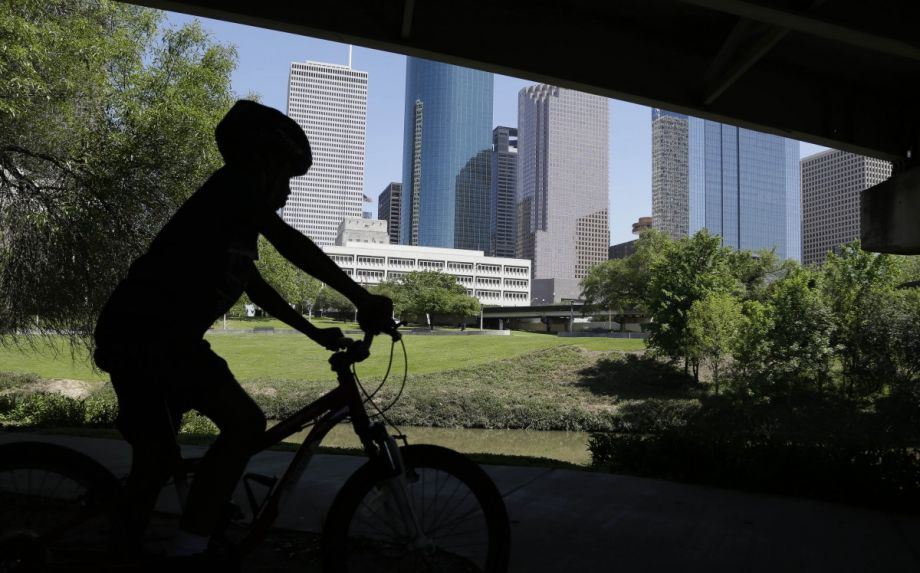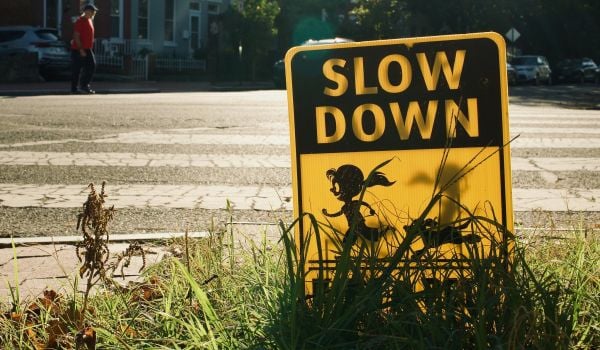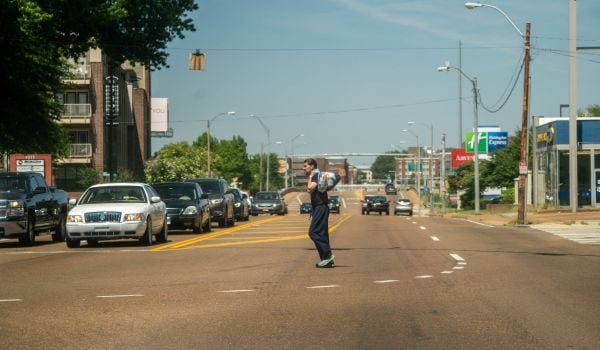City planners often decide which intersections and roads get safety improvements based on analysis of crash data, but according to a new study, that method may be missing something. A look at “near-miss incidents” by Houston-based Kinder Institute for Urban Research reveals that some streets in critical need of improvement could be overlooked.
Kinder researchers collected information from volunteers over the course of one week on events that required a pedestrian or cyclist to carry out evasive action (think an incident that leaves you exclaiming, “that was close”). Participants recorded their starting and ending points, travel mode and detailed accounts of close calls on the road in which they narrowly avoided collisions. The study found that those close calls were a reoccurring experience, and were usually attributed to a lack of awareness from drivers traveling at faster speeds.
Most of the near-misses the volunteers reported are familiar scenarios to anyone who gets around their city on foot or by two wheels: a bicyclist’s path being blocked by a parked car or other objects such as trash; a car making a right turn at an intersection without stopping; cars passing without keeping safe distance; cars making a turn across a bicyclist’s path; or cars backing out of driveways or parking spaces without checking for bicyclists or pedestrians first.
Of the 187 people who recorded their trips within the week, about a third reported 133 near-miss incidents they experienced or witnessed. Eighty-seven of these incidents involved bicycles and cars, and 36 involved pedestrians and cars. More than 90 percent of near-misses between bicycles and cars happened when a fast-moving car made too close of a pass by a cyclist.
Kinder also found that cyclists and pedestrians feel “a disproportionate burden” to avoid collisions, and highlighted the limitations of putting the onus on cyclists and pedestrians to avoid being hit. One 27-year-old woman wrote: “Suburban traveling westbound down on West Road next to me did not slow or edge over to pass me. … I have a white helmet, rear red light and colorful drift shirts. How could they not see?”
In a blog post about the report, one of the researchers, Dian Nostikasari, wrote that some of these near-misses also lead to physical intimidation and verbal attacks on pedestrians and bicyclists, including yelling, tailgating and dangerous overtaking by motorists. That tension between drivers and cyclists and pedestrians could have fatal consequences.
“When a driver yells at, threatens, or assaults bicyclists and pedestrians, the actions highlight the contradiction between the law — which protects the right of bicyclists and pedestrians to use the road — and the longstanding notion that roads are built exclusively for automobiles,” Nostikasari wrote.
These near-miss experiences and harassment could deter people from opting to walk or bike instead of drive, or prompt them to avoid roads they know are dangerous. That, in turn, could reduce the number of collisions at particular intersections, making them appear far safer on paper than they actually are. Kinder also took the reports of near-miss incidents and compared them to 2016 crash data reported by the Texas Department of Transportation. The comparison highlights potentially dangerous trouble spots that aren’t yet apparent because collisions haven’t occurred there yet.
This is something cyclists and pedestrians already instinctively know. In 2015, a Portland cyclist and engineer created a website called NearlyKilled.Me that allows users to self-report near-misses and minor collisions on foot or on bike with the goal of highlighting problematic intersections before they get to the point where people are getting hurt.
Kinder acknowledges some limits to the study; for one, most of the participants were white, working professionals who bike regularly, particularly inside the city’s urban core. Kinder recruited these volunteers through flyers, bike advocacy groups, social media and professional partners, but says future studies should involve more outreach to include more non-white Houstonians, especially those who are socioeconomically disadvantaged and those without easy access to a smartphone or computer. This is especially crucial considering that nearly half of people who bike to work earn less than $25,000 a year, according to census data.
The data for the report were collected just before Houston City Council voted to approve an ambitious citywide bike plan in late March. The plan calls for the city to investigate the role street design plays in fatal bike crashes, and will add more than 500 miles of bike lanes to the city.
Kelsey E. Thomas is a writer and editor based in the most upper-left corner of the country. She writes about urban policy, equitable development and the outdoors (but also about nearly everything else) with a focus on solutions-oriented journalism. She is a former associate editor and current contributing editor at Next City.






_600_350_80_s_c1.jpg)









